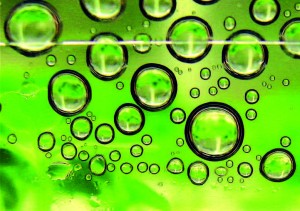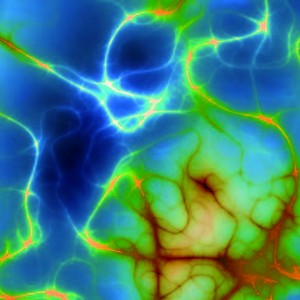MONDAY, 25 NOVEMBER 2013
In 1990, the Pale Blue Dot image made headlines as Earth was photographed by Voyager 1 from a record distance of six billion kilometres. Thanks to astronomers from Oxford and Exeter, we now know of another blue dot, orbiting another star. Forget pale though —this planet is deep azure. Since 2005 the star HD 189733b was known to harbour a “hot Jupiter”, a massive planet on a very short orbit. Subsequent studies found that its surface temperature is close to 1000°C and that the planet is tidally locked to the host star, featuring the same orbital and rotational periods. This means that the same planet side faces the star at all times and the huge temperature gradients resulting from uneven heating are thought to stir up 7000 kilometre per hour winds. The researchers have used the Hubble Space Telescope to monitor the intensity of visible light coming from the system during the passage of the planet behind the face of the star. They observed a drop in the blue part of the light spectrum by 0.01 per cent, but no similar effect in green or red. The tiny missing amount is the light normally reflected by the planet—a hue of blue much deeper than that of Earth, Neptune or Uranus. This extraordinary colour is not due to the presence of liquid water, but rather is believed to be evidence of a hazy and turbulent atmosphere filled with silicate particles. This makes HD 189733b a place where it can rain glass. Sideways. Maciej HermanowiczDOI: 10.1088/2041-8205/772/2/L16
Bacteria Make Biofuel Precursor
Researchers at the Wyss Institute for Biologically Inspired Engineering and Harvard Medical School have engineered a bacterium that can produce a key biofuel precursor. Biofuels are alternative energy sources to petrol, diesel and aircraft fuel. Research on biofuels is critical as burning gasoline shrinks the world’s limited oil supply and releases huge amounts of carbon dioxide to the atmosphere. However, existing biofuels do not produce as much energy as gasoline; ethanol for instance packs only two-thirds the energy of gasoline. Pamela Silver and her team have been pursuing new ways of synthesising gasoline precursors called fatty acids. These energy-packed molecules contain chains of carbon atoms flanked by hydrogen and can easily be transformed into fuel. The chains must have a length of four to twelve carbons; shorter chains do not store enough energy, whereas longer chains are too waxy. The researchers succeeded in genetically modifying E. coli so that the bacterium produces large quantities of octanoate, an eightcarbon fatty acid which can be converted into octane, just by ingesting carbon-rich sugars. Their results are reported in Proceedings of the National Academy of Sciences. Silver and her team are now seeking to engineer E. coli to convert octanoate and other fatty acids into alcohols, which are just one chemical step away from octane and can themselves be used as biofuels. Ornela De Gasperin Quintero
DOI:10.1073/pnas.1307129110
Neurodegeneration: How Important is Taking Out the Trash?
Clearing proteins and cellular waste products is a crucial process, ensuring that tissues and organs function properly. The lymphatic system is a circulatory network of organs and vessels, which runs in parallel with the blood vascular system and is the principal way in which tissues eliminate fluid and proteins. However, the lymphatic system does not extend to the brain, so how does the brain manage its waste? Using a new imaging technique called two photon microscopy, researchers at the University of Rochester Medical Center have discovered a network analogous to the lymphatic system termed the ‘glymphatic system’. The brain is bathed in cerebrospinal fluid which flows into the interior of the brain at high speed sweeping excess proteins and debris away. These are then transported down the spine to the lymphatic system, and ultimately to the liver where they are degraded. So why is this important? Many degenerative diseases are caused by the build up of toxic proteins, leading to the death of brain cells. In Alzheimer’s disease for instance, the protein beta-amyloid accumulates, giving rise to the characteristic plaques found in the brains of patients. Now that we know about the glymphatic system, it will be critical to determine its role in disease. For example, does the glymphatic system slow down with age, explaining why the risk of developing neurodegenerative diseases increases as we get older? Ultimately, it may be possible to develop novel therapies that enhance waste removal in the brain, which can then be used to treat people with conditions such as Alzheimer’s disease. Laura Pearce
DOI: 10.1126/science.1240514



